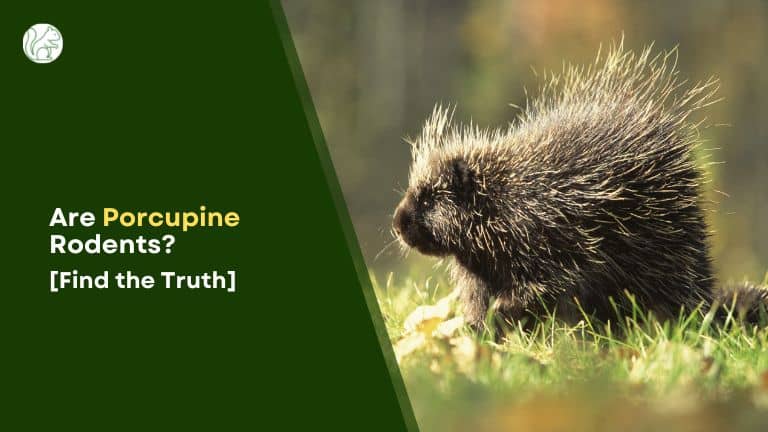A porcupine throwing its quills to protect itself from humans– you might have heard stories about it. But well, they can’t throw their quills like arrows, it’s a myth.
Living in Europe, Asia, Africa, and North and South America, these animals live on plants. While they don’t look like any of the rodents, why is there confusion? Is a porcupine a rodent or a pig? They are rodents!
Their name may be close to the pig but their characteristics are just like any other rodent. Here’s how you can tell if they are rodents or not- check it out!

Are Porcupines and Possums Both Considered Rodents?
Yes, there is a possums and rodents truth. While possums are often mistaken for rodents, they are actually marsupials. Porcupines, on the other hand, are rodents. So, even though they may appear similar, porcupines and possums are not both considered rodents.
Are Porcupines Rodents?
Yes, porcupines are rodents though they look quite different. This species has a medium-sized body. They are from the Rodentia order.
While they belong to the Rodentia order, they have two different families. One is an Old World porcupine and the other is a New World porcupine. In total, there are 58 species of these animals.
You can find these animals in North and South America. Also, they can be found in Europe, Asia, and Africa too. For living, they prefer rocky outcrops, deserts, and even forests.
Their names are confusing, we don’t disagree. The meaning of their name in Latin is Quill Pig. And for this reason, people sometimes think that they are pigs. But well, no, they are not.
The funny part that makes them different from most rodents is their quills. Their entire body is covered with sharp quills that they use for their defense.
Porcupine as Rodents
Now that you know they are rodents, you might want to know the similarities, right? Let’s check out what makes porcupine rodents.
Family and Order
Porcupines are from the Rodentia order just like any other rodents. In this order, there are more or less 1500-200 species. While you know that Rodentia is the largest order of Mammals, it’s interesting that porcupines are the third largest rodents in the world.
Yes, they are medium-sized but their size is the third largest. After capybara and beavers, they get to sit in the next position.
Teeth
A very important characteristic of rodents is their teeth, especially their incisors that never stop growing.
They need to chew on things to keep their balance. Otherwise, their incisors will grow too much to affect their brains.
For the porcupines, the story is the same. They too have the same ever-growing incisors. They keep chewing on things too.
Diet
The diet of rodents consists of seeds, plants, leaves, fruits, and nuts. In short, all the things that a herbivore animal can eat, a rodent can eat them. And porcupines, being rodents, are herbivores.
As a result, their diet also depends on fruits, nuts, seeds, and plants. Also, they eat twigs, bark, roots, berries, etc. just like any other rodent. But the fun part is, some of these species might go for insects.
In some cases, they are seen eating small reptiles too. However, this is just to balance their teeth length and maintain it.
Canines
Rodents are herbivores mostly and as they don’t eat meat, they don’t have canine teeth. They don’t need canines to eat plants and veggies, right? And the same goes for the porcupines. They also lack canines.
Wrap Up
So, you have no confusion now about if a porcupine is a rodent or not. Their looks are not similar but their features are.
From the teeth to their diet, all of them are connected because both of them fall under the Rodentia category. But before you plan on domesticating them. keep in mind they can get aggressive!
